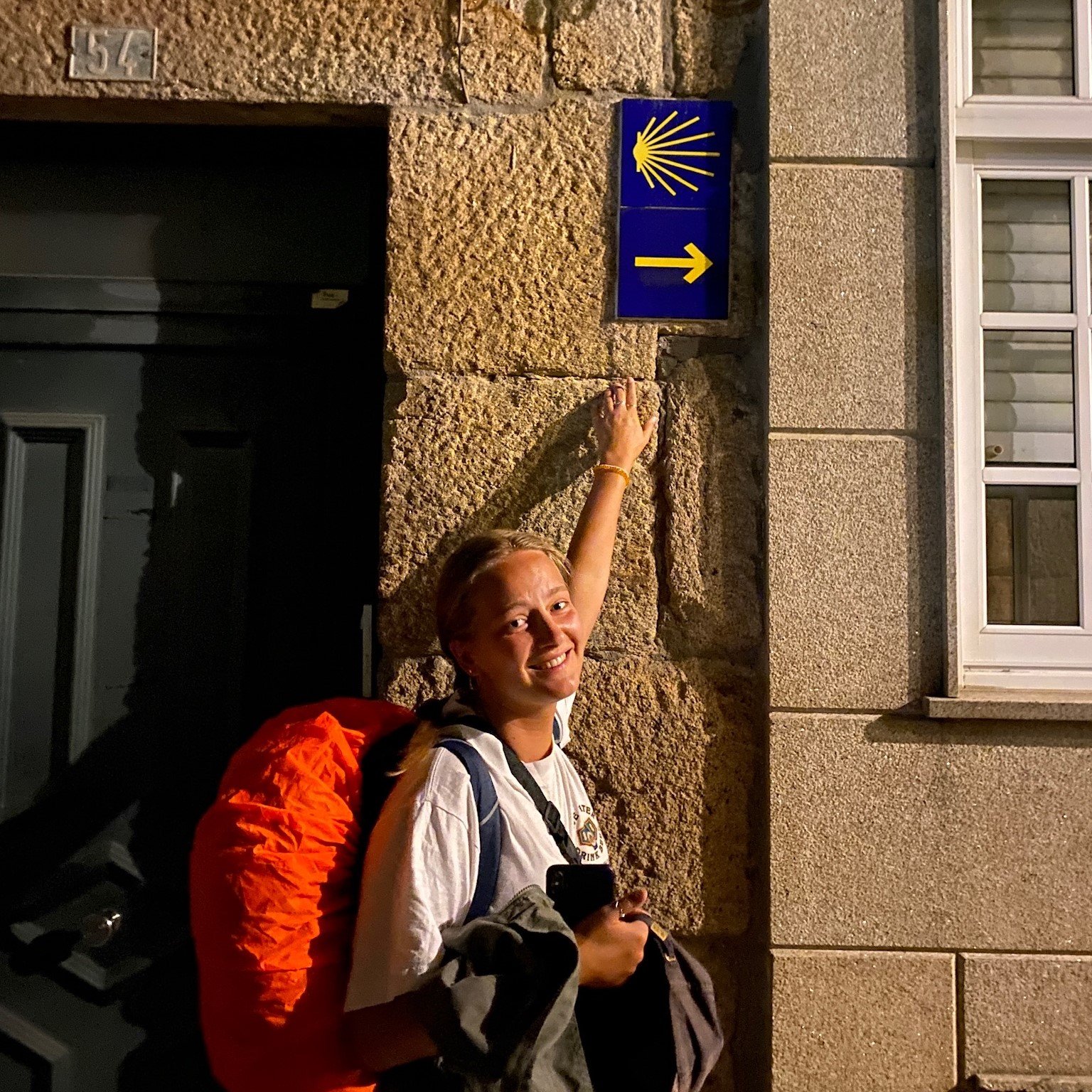Two Pilgrims’ Progress on the Camino de Santiago
Jemima Prior
Bring your jaded Cambridge mind to Spain in the early September sun; walks by the sea, eating good food, and drinking local wine. Instead, I offer you torrential rain, blisters, and dry bread with triangles of cheese.
A friend and I walked 115 kilometres through the northern region of Galicia on the ‘Camino de Santiago’, or Way of St James, for a week this autumn. We became pilgrims in the truest sense, two British Christian girls carrying our Birkenstocks in our rucksacks and quite literally praying as we went. Lured by the chance to speak Spanish, bond with a friend from church, and spend time quietly contemplating life and faith, I dug out my Bronze DofE walking shoes and committed.
I first realised I might have misjudged the trip when my travelling companion and all-round leader Amy tentatively questioned my choice of bangles, necklaces and rings as I arrived at the airport. Her doubt was well-founded. As someone who loves hiking, and has vastly more experience in it than me, she had always wanted to walk the Camino, drawn by its simplicity. I presented a curveball. And though not quite to what we bargained for, embracing pilgrimage and all its quirks proved a moving and unexpected blessing.
As a Christian who grew up in the Church of England, ‘pilgrimage’ was a word thrown around but never really expanded on – I knew my grandparents were going on a pilgrimage to the Holy Land, and yet I have reason to believe that their all-inclusive package will be somewhat different to our experience. Not until mid-way through our journey did I appreciate the walk’s profound significance within Catholicism. Monasteries, churches, and cathedrals line the route, culminating at the shrine to St James in Santiago de Compostela. While I felt little affinity to the Catholic saints, masses and Franciscan Friars, I found a deep appreciation for the profound spiritual, and cultural, weight which the Camino represents for many. I got the sense that while many of the pilgrims we met didn’t necessarily have a faith of their own, their physical pilgrimage was being driven by strong personal reasons.
It was hard, however, to brush off the other pilgrims’ disdain when they heard we were only walking the last 100km – they thought we were ‘soft’, in spite of our calloused feet. It was strange to feel like an outsider, and yet speaking Spanish meant we were our monastery’s resident, albeit reluctant, translators, and the other pilgrims warmed to us. We met true characters; people who had been walking for months, and had seen so much of such a beautiful country. Some shared personal anecdotes and stories; we learned about their lives back home and the wisdom they had gained as regular pilgrims. Others didn’t, but we shared food, experiences and laughs, which more than sufficed.
My reasons for walking, as I mentioned, weren’t quite so profound, or committed, as the devoted pilgrims we encountered. And, perhaps unsurprisingly, there weren’t any great personal revelations on the journey itself either. Amy and I both loved the simplicity and routine of walking as our only task for the day, and in between the rain, Spain was utterly beautiful. We would pray each morning as we were rapidly overtaken by hordes of those who hurried out the public hostels at 5am, and our friendship deepened infinitely. She quickly became a firm friend, who laughed at my hanger while taking it in her stride, and whose capacity for mess I admire to this day. I did not have a deep religious experience whilst we were walking, I did not ‘find myself’ or even find a desire to do anything markedly differently when I got home. I did, however, gain a steadfast and sincere friend. We experienced something hard but worthwhile together, and shared a lot of stale bread (with good Spanish wine when we could) and honest conversation.
Would I do it again? Maybe on a bike, but Amy has made it clear that is not on the cards. I might leave the backpack life to her, and keep my rings and bangles. My walking shoes are back in the cellar, though they served me well. Our relief as we reached the end was palpable, and yet neither of us were desperate to see the Cathedral in Santiago de Compostela for particularly religious reasons, despite the pride we felt in our accomplishment. I do, however, remember sitting in the classically rainy square, watching other exhausted pilgrims arrive at their destination. Many had started the route in France, or even Germany. Their unadulterated emotion at the sight of such a hallowed place reminded me of the joy I find in my faith, and the centrality to my life of believing in the life, death and resurrection of Jesus.
